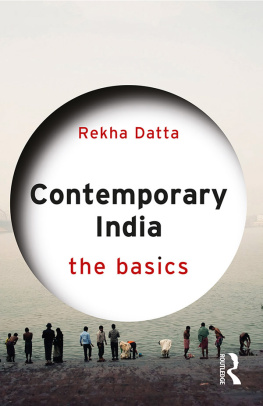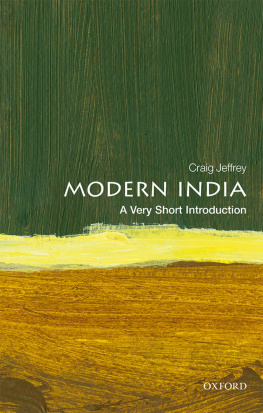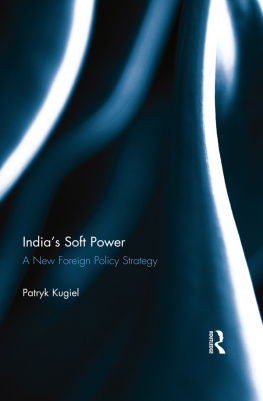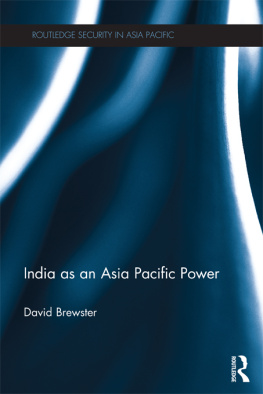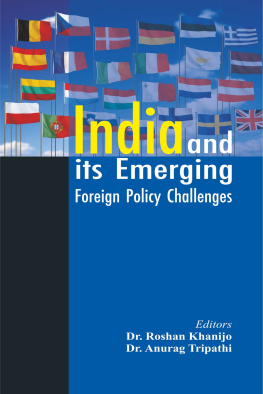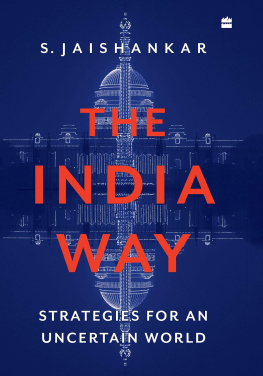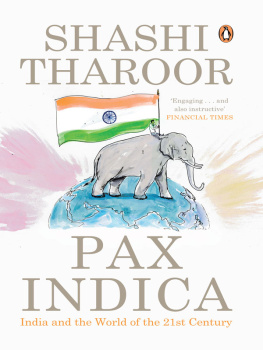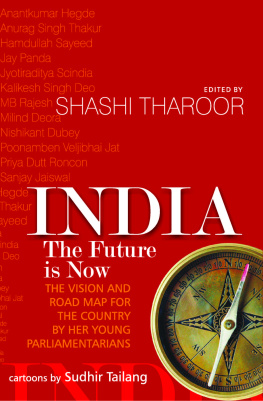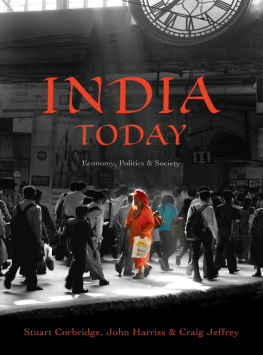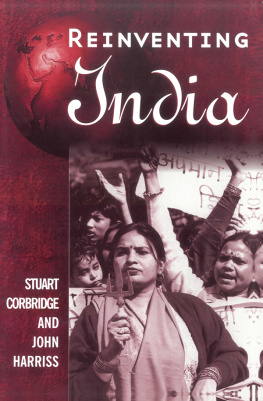Contemporary India
Contemporary India: The Basics provides readers with a clear and accessible guide through the richness, diversity, and complexity of twenty-first century India. It explores the reality of the countrys cultural diversity which creates both harmony and tension. Covering issues the country faces both domestically and on the global stage, this book analyzes the political, social, cultural, and economic landscape of India and investigates how the future might look for India. The book addresses key questions such as:
- How has India risen to be a major economic power?
- What role does sectarianism play in the worlds largest democracy?
- How do caste and gender affect the structure of Indian society?
- What is the domestic and international impact of Bollywood?
Featuring maps, discussion questions, and suggestions for further reading, this is the ideal introduction to India for those who are new to the study of this most fascinating and complex of countries.
Rekha Datta is Professor of Political Science at Monmouth University in New Jersey, USA. She is a Fulbright U.S. Scholar, the recipient of a Fulbright-Nehru Academic and Professional Excellence Award in Teaching and Research.
The Basics
For a full list of titles in this series, please visit www.routledge.com/The-Basics/book-series/B
Research Methods
Nigel Edley
Semiotics
Daniel Chandler
Special Educational Needs and Disability (second edition)
Janice Wearmouth
Sport Management
Robert Wilson and Mark Piekarz
Sports Coaching
Laura Purdy
Translation
Juliane House
Contemporary India
Rekha Datta
Contemporary India
The Basics
Rekha Datta

First published 2018
by Routledge
2 Park Square, Milton Park, Abingdon, Oxon OX14 4RN
and by Routledge
711 Third Avenue, New York, NY 10017
Routledge is an imprint of the Taylor & Francis Group, an informa business
2018 Rekha Datta
The right of Rekha Datta to be identified as author of this work has been asserted by her in accordance with sections 77 and 78 of the Copyright, Designs and Patents Act 1988.
All rights reserved. No part of this book may be reprinted or reproduced or utilised in any form or by any electronic, mechanical, or other means, now known or hereafter invented, including photocopying and recording, or in any information storage or retrieval system, without permission in writing from the publishers.
Trademark notice: Product or corporate names may be trademarks or registered trademarks, and are used only for identification and explanation without intent to infringe.
Cover image: The River Ganga (Ganges) flows through several states in India, covering Indias past, present, and future. Between religious significance, commerce, politics, and pollution, the Ganga is a reminder of change and continuity in contemporary India. The Namami Ganga Project of 2014 is a national initiative to restore the Ganga to its purity and beauty. Pictured here is the banks of the Ganga near the Dakshinweswar Temple in Kolkata. Photo: Amrita Mazumdar
British Library Cataloguing-in-Publication Data
A catalogue record for this book is available from the British Library
Library of Congress Cataloging-in-Publication Data
Names: Datta, Rekha, author.
Title: Contemporary India / Rekha Datta.
Description: Abingdon, Oxon; New York, NY: Routledge is an imprint of the Taylor & Francis Group, an Informa Business, [2018] | Series: The basics | Includes bibliographical references and index.
Identifiers: LCCN 2017030973 | ISBN 9780415841559 (hbk) | ISBN 9780415841566 (pbk) | ISBN 9780203705254 (ebk)
Subjects: LCSH: IndiaHistory21st century.
Classification: LCC DS480.853.D3827 2018 | DDC 954.05/3dc23
LC record available at https://lccn.loc.gov/2017030973
ISBN: 978-0-415-84155-9 (hbk)
ISBN: 978-0-415-84156-6 (pbk)
ISBN: 978-0-203-70525-4 (ebk)
Typeset in Bembo
by Apex CoVantage, LLC
For:
The 1.3 billion people of India, especially the youth of the country, who are the torchbearers of the largest democracy in the world.
My students, who taught me to look at contemporary India from a whole new perspective.
The loving memory of my eldest brother, Asok Datta, the dawns child, who breathed for the first time as the day broke on Indias freedom in 1948, and for the last time this month, as democratic India prepares to turn 70, embodying the challenges and hopes of a generation and others to follow.
Rekha Datta
June 2017
Contents
Figures
Tables
Photographs
Writing about India is both exciting and challenging. The prospect of writing a Basic Book on contemporary India was both of these and more. As I undertook the project, I encountered some usual, and some unusual, challenges. Indeed, I was excited about the project. The excitement of writing about one of the most fascinating countries of the world a country that I was born and raised in, and have maintained close contact with since I moved to the United States can hardly be expressed in words. I was also filled with apprehension. The understandable apprehension came with the thought of writing about a country, the scholarship on which is as rich and deep as its historical and contemporary reality. It was also about trying to encapsulate a fascinating, complex, often paradoxical reality that is India, with its contemporary society and politics deeply rooted in its mixed historical past, and yearning to break free into a new world of economic prosperity and attain a major power status. Most of all, I felt that the story of India never ends. Hence, what is captured in the book is merely an attempt to tell a story that is filled with complexity, paradoxical puzzles, and remarkable resilience, and which does not have an ending.
The enormity of the task was also deeply humbling. There are few things in this world as awe-inspiring, fascinating, and humbling as Indias cultural and socio-political history. Coupled with the complexities surrounding the genesis and impact of Indias rising economic and military capability on the country and its neighbors, the task of capturing all this in a short volume seeking to offer a basic understanding of contemporary India became even more daunting. While attempting to understand Indias multifaceted prospects and challenges as a rising power, the realization that one comes to is that India is rising on many scores, including economic well-being of millions, increasing literacy levels, and womens empowerment. These are coupled with growing class divisions, millions of children still dropping out of school beyond the primary levels, and a disturbing rise in rates and forms of sex- and gender-based violence so much so that one realizes that there are not one or two but indeed many Indias, and it is more than a truism. Perhaps this is what makes India so fascinating and perplexing. Presenting this complex reality as a Basic Book, which would open the gates to understanding India for the first timer, and capturing the complexities and the rich contribution of scholarship on India was also a challenge. I chose to keep the book more as a narrative and an overview, and I hope that the curious reader will venture into the more nuanced analyses of the facets of India that make it so intriguing.

